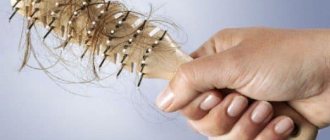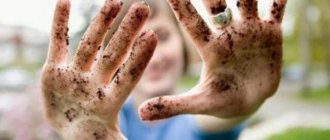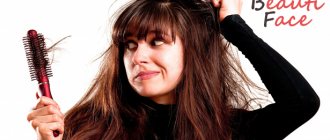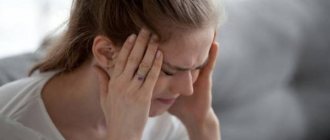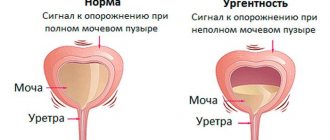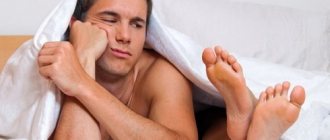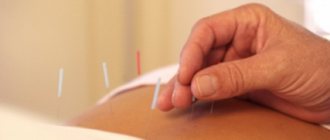Baldness is a big problem for every man. In our article we will tell you how to deal with it.
As official statistics show, most men on the planet face hair problems. They become thinner, turn gray, and also fall out. Often representatives of the stronger sex believe that these problems are of a purely personal nature and do not want to turn to specialists.
As a rule, the age at which hair problems begin is not at all important. Young men can also face these problems. Often the reasons are hidden in genetics or chronic diseases. This can also be caused by improper care.
What is hair loss in men?
Recently, trichologists announced a theory that alopecia is becoming more common in young men.
In recent years, even teenagers under the age of 18, who do not have a genetic predisposition to such problems, are faced with a similar problem.
Anyone can stop this non-stop process, but using anti-hair loss shampoos, as well as serums, balms, and lotions may not be enough.
You need to understand the reasons behind hair loss and do everything necessary in a timely manner to stop and prevent this process. By the way, do not confuse hair loss as a disease and as a seasonal symptom, due to a lack of vitamins.
The fact that hair falls out constantly can be considered a natural process. They live on the head for an average of 3 years, after which they fall out and thereby give way to new ones. Throughout a person’s life, a person’s follicles are renewed, and 25-30 new rods grow.
The normal rate of hair loss per day for men is 50-100 hairs, but if this figure is significantly higher, the issue of the pathological form of the disease can be considered, which must be treated. If you notice hairs on your pillow, on your collar, or in the bathroom after taking a shower, you should seriously think about going to a trichologist.
Types of alopecia
The following types of alopecia are presented to your attention:
- Androgenetic type
- Diffuse type
- Socket type
- Scar type
This is the most common reason, which is based on heredity. Testosterone is active in the male body, which, when broken down, can cause side effects, which is reflected in DHT.
An increase in its percentage in the body has a bad effect on hair, because of this it stops growing normally and falls out ahead of schedule. The fronto-parietal zone is affected by the hormone, but initially men experience hair loss on the crown and the first hairline.
This is what causes the area of the temples and back of the head to remain the same as it was before. In this case, if you choose a method rationally, it is advisable to carry out a transplant; it will bring the desired result in the most hopeless cases. Treatment should be aimed at strengthening the hair that remains in the healthy area and restoring those that are in the problematic area.
This disease most often affects the fair sex. All hair on the head falls out evenly. Among the underlying reasons: changes in hormonal levels, diseases associated with the thyroid gland, infectious and inflammatory processes that have already developed into a chronic form, as well as skin diseases. Androgenic factors can also be included here; they will only complicate the situation.
Hair transplantation, in this situation, should be carried out with the utmost care. This is because by resorting to transplantation, it will be difficult to achieve the required desired thickness; cosmetologists and hairdressers will only solve the visual problem. But in some cases, this is exactly what men want. You can find out more about modern transplant methods, including non-surgical techniques and the price of this procedure, on our website. This type of disease requires constant treatment, otherwise the situation will only get worse over the years.
It will manifest itself in many zones (foci) of baldness, which can be located not only on the head. Over time, the disease develops, small foci will begin to merge, and expanded areas of hair loss will form. Trichologists identify many reasons for the manifestation of such alopecia - from traumatic brain injury to infectious lesions, and can also be a consequence of autoimmune diseases.
Today it is difficult to establish the main factor that provokes the occurrence of the disease. Hair transplantation should be performed exclusively using a non-surgical technique (minimal intervention) if the zones do not “spread” and new areas of loss do not form.
The hair follicles begin to become inflamed and scar tissue appears. This disease is extremely rare - only 1 person out of 100. It is based on diseases of the skin, infectious nature, sometimes such hair loss can be a consequence of the presence of cancerous tumors, as well as thermal and chemical burns, charms and scars that were received as a result of injury , or as a result of surgical intervention. In recent years, cicatricial alopecia has been appearing in those guys who previously wore dreadlocks.
External reasons
External non-pathological causes are easier to diagnose by a specialist, and also easier to correct during treatment. Male alopecia due to external causes can be cured faster, but only if you consult a medical specialist in a timely manner. Unfavorable external factors that can cause alopecia include the following reasons:
- Unhealthy eating. Signs of baldness develop slowly and imperceptibly, but with poor nutrition and vitamin deficiency, the presence of alopecia can be predicted much earlier. A man is automatically at risk if he eats fried, fatty, sweet and starchy foods, which negatively affect the condition of his skin and hair. To begin with, subcutaneous fat increases, it clogs the pores and sebaceous glands, preventing new hair from coming out.
- Taking medications. The problem of baldness can be a side effect of irrational and prolonged use of potent drugs. These may be antidepressants, antibiotics, immunosuppressants, or hormonal agents. After their cancellation, the situation, as a rule, stabilizes.
- Genetics. Few men cannot understand what is associated with earlier hair loss, although in 80-90% of cases alopecia is a hereditary factor. Moreover, even the age criterion is transmitted by heredity, that is, when the father began to lose hair, at the same age the offspring will begin to lose hair.
- Stress and lack of sex life. All this has a negative impact on the psycho-emotional background, psychological health of a man, his sleep, ability to work and other areas of life. All this is often accompanied by hair loss.
- Insomnia. Medicine confirms that the hormone that promotes hair growth is produced by the body at night when a person sleeps. Accordingly, insomnia interferes with the synthesis of this hormone, complicating natural hair growth.
- Long-term interaction with highly toxic substances. Most often, men who work in hazardous jobs or live in environmentally unfavorable areas can experience hair loss.
- Injuries. Any scars and scars often lead to the absence of hair growth in some places on the scalp. Patchy baldness is rarely correctable.
Is your hair falling out?
Not really
In addition, the causes of hair loss on the crown, back of the head, forehead and temples can be caused by incorrectly selected and low-quality care products containing aggressive chemical components. When treating alopecia, you will need to completely give up bad habits, as well as correct your lifestyle, which affects the condition of your scalp and hair.
Causes and risk factors
Reasons affecting hair loss in men include:
- infectious diseases
- stressful situations
All infectious diseases, especially those that provoke fever, can cause hair loss. Sometimes a man may not even know about a chronic infectious disease that has been quietly detrimental to her body for many years;
Psychologists and neurologists have long noticed a pattern of hair loss during a stressful situation. During this period, spasms occur that negatively affect blood flow; small vessels of the scalp are no exception. As a result, the follicles do not receive the necessary nutrition, their growth slows down and the process of death accelerates.
Scarring baldness
Characterized by complete baldness. In scarring alopecia, a man develops connective tissue on his scalp. The affected skin looks like a healed wound. The cause of the disease is an infection that caused an inflammatory process. If the disease is treated at an early stage, the hair may be preserved. Scarring alopecia develops due to chemical or thermal burns and head injuries.
The only treatment for this type of baldness is surgery. The affected areas of skin are removed completely. In their place, hair is transplanted from other parts of the patient's body. Transplantation can also occur using donor skin. Prognosis for transplantation is mixed. The patient's scalp is covered with scars, under which blood circulation is impaired. For this reason, donor grafts often do not take root.
Means to combat the disease
Professional products, which can be purchased in the cosmetics department of any store, contain many active ingredients that improve blood circulation and stimulate the active phase of growth.
They nourish hair when hair loss is caused by seasonal exposure to negative factors - for example, an autumn lack of minerals or stress.
But before applying such cosmetics, carefully read the composition and take a few minutes to read the instructions.
“minoxidil” among all the ingredients , be prepared that if you stop using shampoo, your hair will begin to fall out even faster than before. In addition, incorrectly selected products develop dermatitis or cause dandruff, even seborrhea.
ATTENTION! If your body no longer has the strength to fight all the causes of hair loss, purchase a complex of vitamins and microelements at the pharmacy.
Buy anti-hair loss products for men, the components of which are aimed at activating metabolic processes: aminexil, tricomin, TRX2, and an antifungal agent: Nizoral. Read about how pills help against hair loss in men here.
Folk medicines - pros and cons
The effectiveness of folk remedies is confirmed by the world's leading trichologists. When treating, it is necessary to focus on general strengthening and tonic agents: extracts of tar, propolis, mustard, red hot pepper, camphor, menthol, nicotinic acid. But if you do not follow the proportions, you can leave a burn on the skin, turning ordinary hair loss into a more global problem. This is considered the main disadvantage of traditional medicine.
- mask with hot pepper tincture. The burning sensation actively increases blood flow, which affects the deepest layer of the skin. As a result, subcutaneous blood circulation is strengthened, cells begin to divide faster, metabolic processes in them are accelerated, nutrients are fully absorbed, the bulbs are strengthened, and hair growth is activated;
- rubbing Bay essential oil into the skin. Its work activates reserve capillaries and metabolic processes on the walls of blood vessels, which causes a decrease in the volume of the fat layer and restoration of hormonal levels. For preventive and therapeutic purposes, this oil began to be used relatively recently.
Read on our website about the use of the following effective folk remedies that are included in masks for hair loss: yeast, cognac, chicken egg, rye bread, aloe, sea and table salt, castor, burdock oil, honey, onion, garlic, kefir, Oak bark.
3Treatment
Treatment of alopecia areata is a process that requires a professional approach and a serious attitude. To carry out therapy use:
- Medications;
- Physiotherapy;
- Folk remedies.
Often these three treatment methods are combined to achieve more effective and faster results.
4Drug therapy
The following drugs are most often used to treat focal baldness in men:
- Minoxidil. Restores hair and promotes its growth. There are a number of side effects, so you need to use it strictly according to the course prescribed by a specialist.
- Dithranol. An effective remedy for alopecia areata, has no side effects. And also used for psoriasis.
- Androlithin. Increases the regenerative ability of cells, as a result of which hair grows faster and there are fewer foci of disease.
Immunosuppressants are an indispensable treatment for this type of alopecia in men. These drugs suppress the immune system and its aggressive effect on the hair roots.
Corticosteroid-based ointments are often prescribed. The hormones they contain nourish and restore hair. This type of treatment should only be carried out under the supervision of a specialist in order to avoid complete atrophy of the follicles.
5Physiotherapeutic procedures
Alopecia areata in men responds well to physiotherapy. Timely treatment can not only stop the process of hair loss, but also reverse it.
There are three most effective procedures:
- Mesotherapy. A relatively new method of treatment. Its essence is to nourish the hair roots with specialized vitamin complexes, which are administered using injections directly under the skin.
- Massage. A pleasant and incredibly useful procedure that allows you to improve blood circulation, stimulate hair growth, etc. You need to perform a head massage with the help of devices or a specialist in this field.
- Laser therapy. The most effective method that all doctors insist on. During the procedure, the hair follicles are exposed to laser beams, as a result of which they become stronger and begin to actively grow. In combination with drug treatment, the fastest results can be achieved. The procedure can only be ineffective if there is a complete absence of hair follicles.
For men susceptible to total alopecia, the only treatment option may be hair transplantation to the areas of hair loss.
6Alternative treatments
Traditional medicine is the first thing people resort to when hair loss begins. Not every man views alopecia as a serious problem, and there is a clear reason to consult a doctor. However, you should not limit the treatment of focal baldness to only grandma’s recipes, as this can lead to complete hair loss. But using this type of therapy in combination with other methods is very effective.
Here are the most popular recipes for the treatment of alopecia in men.
Pepper tincture
To prepare, you need to take four pods of hot pepper and half a liter of vodka. Chop the pepper and add liquid. It should be left for three weeks in a dark place. After preparation, the product must be rubbed into the hair roots. An irritating effect on areas of hair loss will stimulate growth and restoration of hair. You need to be careful not to let the tincture get into your eyes.
Decoction of willow and burdock
Alopecia in men can be easily treated with this decoction. To prepare it, you need to mix 4 tbsp. spoons of willow bark (chopped) and the same amount of burdock root. Then pour boiling water over the ingredients and leave for 30 minutes. It should be used while washing your hair.
A decoction based on nettle and coltsfoot
The initial stage of male pattern baldness can be effectively overcome with this decoction. It is prepared quickly and used during bath procedures. To do this, take dried plants (1:1) and fill them with boiled water. Leave for half an hour and wash your hair.
Mustard for alopecia in men
In a bowl, mix burdock oil and dry mustard (in a ratio of 3:1) and leave for 25 minutes. Then rub the mask into the hair roots and wrap with polyethylene. It is necessary to walk in this state as long as the burning sensation can be tolerated, but no more than 1 hour. This method will help restore hair growth in men and prevent baldness.
Aloe for alopecia
A mask of aloe juice, garlic and chicken yolk will strengthen the hair roots and promote their restoration.
Birch and onion
Treatment of baldness in men can be carried out using: yolk, onion and birch juice. After mixing the ingredients in equal proportions, the mask should be applied to the hair and left on for two hours.
When treating with traditional medicine, natural ingredients are used in most cases; but even such therapy should be carried out under the supervision of a doctor.
This will help avoid unwanted consequences.
How long does treatment take?
Treatment for hair loss can take a month or longer. It all depends on the treatment method you choose and the cause of hair loss. In a maximum of 3 months you will have new hair, and you will be pleasantly pleased with its condition. If within 2 weeks you do not see significant changes, then the method or treatment you chose was not suitable. Contact a trichologist for clarification regarding treatment.
